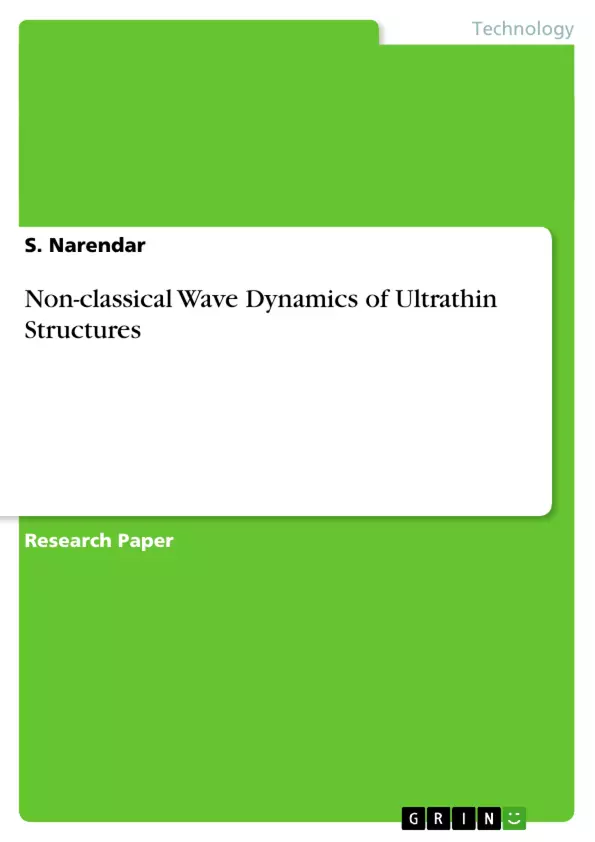In this paper, the nonlocal elasticity theory has been incorporated into classical 1D-rod model to capture unique features of the rod like structures at Nanoscale, which are considered as ultra-thin structures, under the umbrella of continuum mechanics theory. The strong effect of the nanoscale has been obtained which leads to substantially different wave behaviors of nanoscale-rods from those of macroscopic rods. Nonlocal bar model is developed for nanorods. The analysis shows that the wave characteristics are highly over estimated by the classical rod model, which ignores the effect of small-length scale. The studies also show that the nonlocal scale parameter introduces certain band gap region in axial wave mode where no wave propagation occurs. This is manifested in the spectrum cures as the region where the wavenumber tends to infinite (or wave speed tends to zero). These results are also compared with the Born-Karman model and also with the second and fourth order strain gradient models. The results can provide useful guidance for the study and design of the next generation of nanodevices that make use of the wave propagation properties of single-walled carbon nanotubes.
Inhaltsverzeichnis (Table of Contents)
- Introduction
- Mathematical Formulation
- A review on theory of nonlocal elasticity
- Nonlocal strain gradient models
Zielsetzung und Themenschwerpunkte (Objectives and Key Themes)
This paper investigates the wave dynamics of ultra-thin structures, particularly nanorods, using nonlocal elasticity theory. The goal is to understand the unique wave behavior of these structures at the nanoscale and its deviation from classical continuum mechanics. Key themes explored include:- The impact of nonlocal scale parameter on wave propagation in nanorods
- The emergence of band gap regions in axial wave modes
- Comparison of results with classical rod models, Born-Karman model, and strain gradient models
- The potential application of these findings for designing next-generation nanodevices
Zusammenfassung der Kapitel (Chapter Summaries)
Introduction
The introduction defines ultra-thin structures, categorizes nanostructures, and highlights the significance of one-dimensional nanostructures (nanorods). It discusses the limitations of classical continuum theories in describing heterogeneous phenomena and the need for higher-order strain gradients. The paper then introduces Eringen's nonlocal elasticity theory as a tool for addressing these limitations.Mathematical Formulation
A review on theory of nonlocal elasticity
This section introduces the theory of nonlocal elasticity, emphasizing the dependence of stress at a reference point on the strain field at all points in the body. The key equations for linear, homogeneous, isotropic, nonlocal elastic solids are presented.Nonlocal strain gradient models
The section explains the development of second and fourth-order strain gradient models by expanding the general integral constitutive equation of nonlocal elasticity and retaining only the first two and three terms, respectively.- Arbeit zitieren
- S. Narendar (Autor:in), 2012, Non-classical Wave Dynamics of Ultrathin Structures, München, GRIN Verlag, https://www.hausarbeiten.de/document/201982


